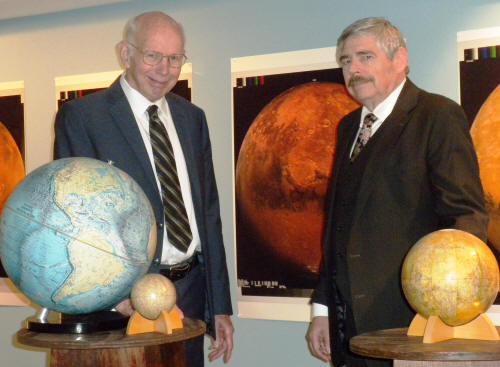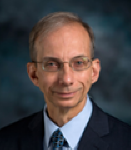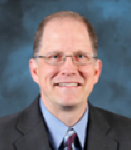THEME 1: Enabling Large-Scale Space Development & Human Expansion
John Mankins, Theme 1 Chair and member of the National Space Society Board of Directors, set the stage by
discussing limitations of current space states-of-the-art and opportunities for improvements.
- Franklin Chang-Diaz, PhD, six-mission astronaut who spent 66 days in space and is now CEO
of Ad Astra Rocket Company, participated by Skype and discussed the practicalities of living and
working in space.
- James Powell, PhD, retired physicist from Brookhaven National Laboratory and
inventor of both the most advanced nuclear thermal propulsion (NTP) rocket,
the Particle Bed Reactor (PBR), and also of superconducting MagLev
(magnetic levitation)
now in advanced development in Japan was not able to attend in person.
His work was presented by John Mankins and John Rather.
- Michael Houts, PhD, Nuclear Research Manager for
NASA's Marshall Space Flight Center and the principal investigator
for NASA's Nuclear Thermal Propulsion (NTP) project, discussed NTP
and the Y-12 Kilopower, small nuclear power plant, project.
- Joel Sercel, PhD, well-known physicist focused on
development of space resources and founder of TransAstra Corp,
discussed the capture and uses of small asteroids.
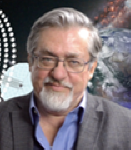
John Mankins |

Franklin Chang Diaz |
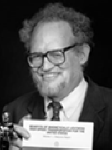
James Powell |
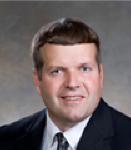
Michael Houts |
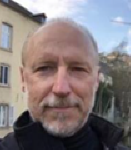
Joel Sercel |
|
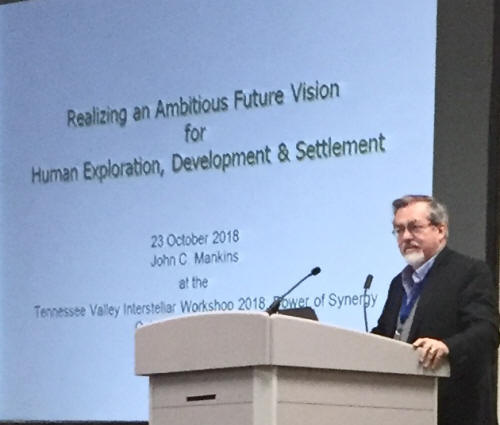
John Mankins Opening Theme 1
|
THEME 2: Catalytic & Affordable Synergistic Breakthrough Concepts &
Technologies
Jason Derleth, Theme 2 Chair and Program Executive
in charge of the NASA Innovative Advanced Concepts (NIAC) program, set
the stage by discussing the NIAC program and its relation to the
concepts and technologies of this Theme.
- Jonathan K. Witter, PhD, Chief Engineer for
BWXT's Advance Technology Programs, talked about Particle Bed
Reactors (PBR) and their history of testing in the 1990s.
- Roger Lenard, the DoD Timberwind PM for the PBR
testing, discussed the history of that project.
- Philip Lubin, PhD, professor of physics at UC
Santa Barbara and director of the NASA Starlight program, discussed
directed energy propulsion and power beaming.
- Robert Bagdigian, NASA's Deputy Chief Engineer
for the Human Exploration and Operations Mission Directorate,
discussed environmental control and life support for space missions.
- William Peter, PhD, Director of DOE's
Manufacturing Demonstration Facility (MDF) at the Oak Ridge National
Laboratory (ORNL), discussed large-scale 3D printing and complex
structures and the possibility of using lunar or asteroidal regolith
in 3D printing.
- Jeffrey Slostad, Director of Strategic
Missions at Tehters Unlimited Inc., discussed the in-space
manufacturing supply chain and a service chain built around water as
a key resource.
- Mark Carter, PhD, Senior Vice President of
Technology Development for Ad Astra Rocket Company, discussed the
VASIMR plasma propulsion system.
- Ken Roy, an engineer in Oak Ridge, discussed
the affects of low gravity on human physiology and a possible
solution using superconducting MagLev technology.
-
Siegfried Janson, PhD, senior scientist at Small
Satellite Concepts group at The Aerospace Corporation, discussed
Brane Craft (fabric space craft) and smart propellants.
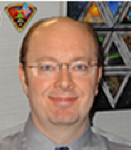
Jason Derleth |
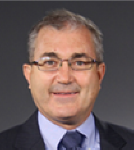
Jonathan Witter |

Roger Lenard |

Philip Lubin |
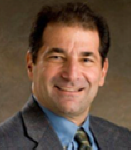
Robert Bagdigian |
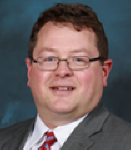
William Peter |
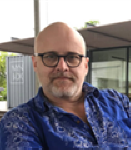
Jeffrey Slostad |
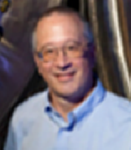
Mark Carter |

Ken Roy |
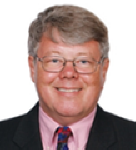
Siegfried Janson |
|
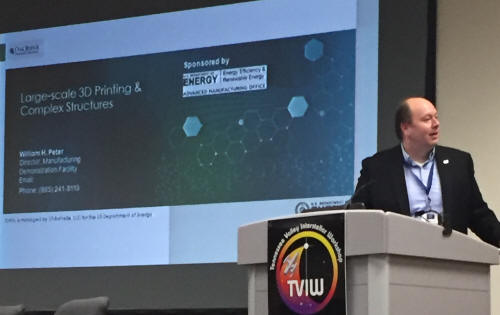
Jason Derleth Introducing a Speaker
|
THEME 3: Transformative Decadal Plan
Matt Hollingsworth, Theme 3 Chair and CEO of Carta
Healthcare, set the stage by discussing how technology development is
funded - or not.
- James T. Early, PhD, retired from Lawrence
Livermore National Laboratory (LLNL), discussed how the technologies
fit together to accomplish the plan.
- John D. G. Rather, PhD, the President of RCIG,
listed and discussed the synergistic technologies and concepts.
He focused on methods for capturing small (10 meter) asteroids
passing through cis-lunar space and the many uses of these
asteroids.
- John Mankins, President of Mankins Space
Technology and member of the National Space Society Board of
Directors, discussed
the critical nature of space solar power and presented a design for
arbitrarily large phased array, hyper-modular solar power
satellites.
- Dean S. Hartley III, PhD, Principal of Hartley
Consulting, described the integration requirements for the decadal
plan, starting with the goal of reaching Mars by 2030 and
emphasizing the multiple areas of deconfliction that are required in
such an integration (YouTube
video
 ). ).
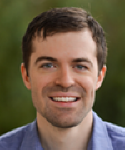
Matt Hollingsworth |
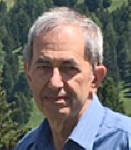
James Early |
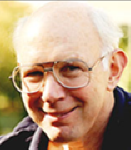
John Rather |

John Mankins |
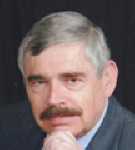
Dean Hartley |
|
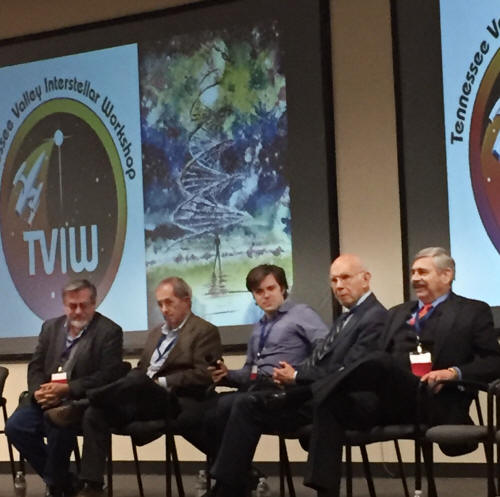
Theme 3 Panel
|
THEME 4: Ultimate Paths to the Future (Science Fiction to Fact
Relationships)
Catherine Asaro, PhD, Theme 4 Chair and noted Science Fiction
author, set the stage by discussing plausible approaches to extend human
populations into the solar system and beyond, including the possibility of
circumventing the light speed barrier through complex speed, introduced in her
paper in the American Journal of Physics.
- Marc G. Millis, Tau Zero Foundation, described
the nature and history of breakthrough technologies and the
implications for future breakthroughs.
- David Brin, PhD, scientist, inventor and New
York Times bestselling author, participated through Skype,
discussing options for future destinations and the possibilities of
modifying their environments or modifying ourselves, either
biologically or through cybernetic means.
- Arlan Andrews, Sr., PhD, founder of the Science
Fiction think tank, SIGMA, was physically unable to attend; however,
his slides and speaker's notes were presented by Catherine Asaro.
Andrews discussed repurposing asteroids and presented a valuation
metric, called the Pournelle Value, equalling the annual world
production of a particular metal.
- Ruth E. Kastner, PhD, professor of Philosophy
of Physics at the University of Maryland, College Park, described
the Transactional Interpretation of quantum mechanics.
- Buck Field, Professional Ethics and Information
System consultant, discussed the history of revolutionary concepts
from cosmologies to quantum interpretations.
- Allen M. Steele, noted Science Fiction author,
participated through Skype, discussing the evolution of starships in
Science Fiction.
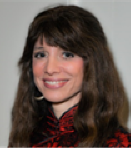
Catherine Asaro |
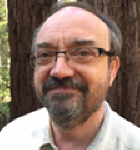
Marc Millis |
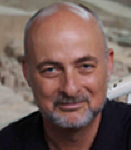
David Brin |
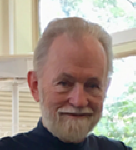
Arlan Andrews, Sr. |
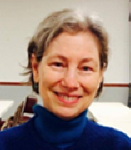
Ruth Kastner |

Buck Field |
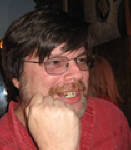
Allen Steele |
|
|
|
|

Catherine Asaro Introduces Theme 4 |
SYNTHESIS - RECAPITULATION
Dean Hartley closed the symposium with a review of the
presentations (YouTube
video ). ).
Discussions included the following Technology Enablers:
- Propulsion and Transportation
- Nuclear Thermal Propulsion
- VASIMR
- Chemical propulsion
- Photonic propulsion
- Power
- Nuclear
- Solar
- Photonic Power Beaming
- Materials and Uses
- Lunar regolith and asteroid materials
- Additive manufacturing, solar concentration, superconductors
- Environmental Control and Life Support
- Synergies
The nature of the presentations can be characterized by the
following:
- Each presenter was passionate about his or her presentation
- The science needs to be tested
- The engineering needs to be tested
- The results for each option must be compared with the
results from the other options for cost, efficiency, synergy,
etc.
- Other technologies are relevant
- We have gathered the best that we could find
- We may have missed identifying some
- Some may be missing because presenters for them were unable
to attend the symposium
- We are advocating for broadened technology developments to
- Open the option space
- Benefit from synergies
A Sense of Wonder is deserved
- "There are more things in heaven and earth, Horatio, than are
dreamt of in your philosopy"
- Hamlet I.5: 159-167
- We know a lot
- But there is more we don't know
- Science Fiction permits
- Search for novel technologies
- Examination of ramifications
- Gedanken experiments
- Exploration of concepts
- Demand for Loopholes
|
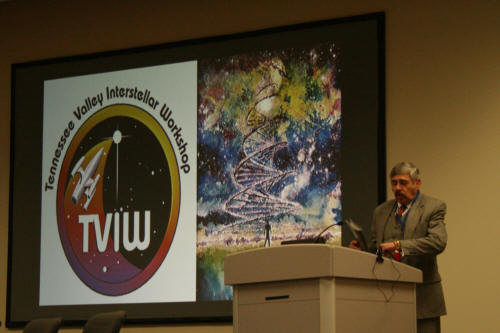
Dean Hartley Closing the Symposium
|
|
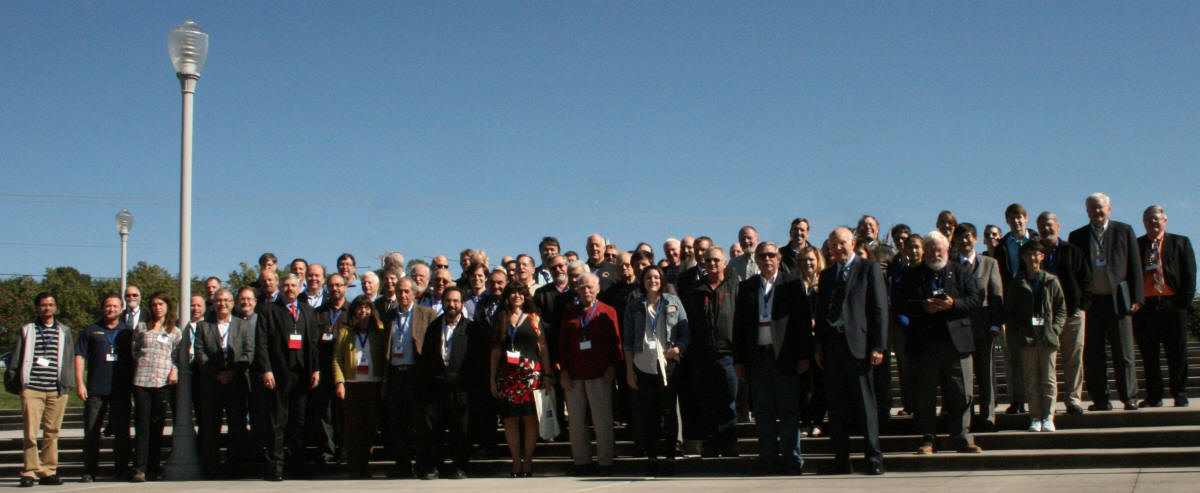
Participants (most of them) |
CONCLUSION
Themes 1 through 3 discussed the possibilities for accomplishing the goal for
reaching Mars by 2030. The figure below shows nominal time frames for the
goals of operating in cis-lunar space, using the lunar surface and the Mars
voyage. The "Wait" times don't mean "do nothing," but involve supporting
efforts. The "Test" times don't mean "do nothing else," but emphasize test
activities. The "Use" times don't mean "we are finished," but emphasize
using what we have learned and tested.
Theme 4 discussed going beyond a Mars mission, making a critical point that
we should not stop at Mars.

If you arrived here using a keyword shortcut, you may use your
browser's "back" key to return to the keyword
distribution page.
 Return to Hartley's Projects Page
Return to Hartley's Projects Page



